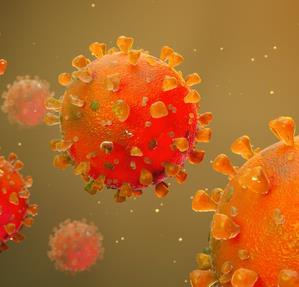
Study Shows KP.2 Covid Variant Dominant In India
The KP.2 strain is part of the variant dubbed FLiRT, which belongs to the Omicron lineage.
Omicron was highly transmissible and showed great immune escape.
First identified globally in January, KP.2 is a descendant of Omicron's JN.1.
In India, KP.2 was first detected in December 2023 in Odisha.
The study, by a team of Indian scientists from BJ Government Medical College & Sassoon General Hospitals, involved 5,173 Indian SARS-CoV-2 whole genome sequences with collection dates between November 2023 and June 2024.
“Despite the affected individuals experiencing mild symptoms, studies have shown lower neutralisation titers and high infectivity due to FLiRT mutations, suggesting KP.2's potential rise to global dominance,” Dr. Rajesh Karyakarte, Professor and Head, Department of Microbiology, BJ Government Medical College, wrote in a post on social media platform X.
The study published in the Cureus: Journal of Medical Science analysed 5,173 sequences, and found JN.1 as the predominant lineage (65.96 per cent), followed by KP.2 (7.83 per cent) and KP.1 (3.27 per cent).
The majority of KP.2 sequences were from Maharashtra (61.23 per cent), followed by West Bengal (9.38 per cent), Gujarat (6.67 per cent), and Rajasthan (5.93 per cent).
The overall recovery rate for KP.2 cases was 99.38 per cent, with only 0.62 per cent succumbing to the disease.
Dr. Karyakarte said the highly transmissible variant caused“symptoms such as fever, cold, cough, sore throat, body ache, and fatigue” which were“generally not severe”.
It also showed the“ability to evade immune responses underscoring the virus's ongoing adaptability.”
Further, Dr. Karyakarte noted that the“study highlights the critical need for genomic surveillance based on clinical cases.”
He also pointed out the“declining active surveillance, testing rates, and wastewater monitoring” was a hinderance to accurately assess the true burden of Covid.
“The study underscores that both of these epidemiological methods enable the public health authorities to forecast, mitigate, and prepare for potential outbreaks more effectively,” the expert said.

Legal Disclaimer:
MENAFN provides the
information “as is” without warranty of any kind. We do not accept
any responsibility or liability for the accuracy, content, images,
videos, licenses, completeness, legality, or reliability of the information
contained in this article. If you have any complaints or copyright
issues related to this article, kindly contact the provider above.

















Comments
No comment